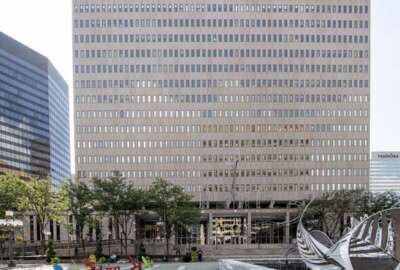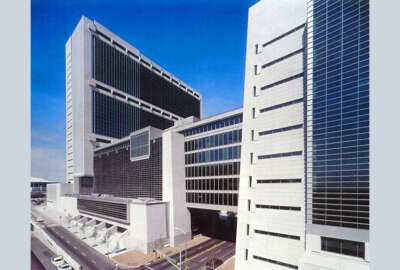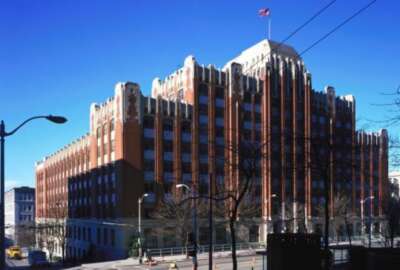From chilly weather to chili dogs: The Central Region’s FEBs
From Chicago to Cleveland, FEBs in the Central U.S. help local feds with retirement planning and health benefits, while also giving back to their communities.
From Feb. 12-16, Federal News Network will, day by day, dive into the details of each of the four Federal Executive Board regions currently operating across the U.S. On top of featuring the work and plans of each of the boards, we’ll take a closer look at the path that lies ahead for FEBs. Stay tuned for more!
Across the country, most of the top federal employers are, not surprisingly, either Defense Department components or the Department of Veterans Affairs. But the Central U.S. looks a little different.
That’s because the Agriculture Department makes the list as the fourth most common agency for feds in the Central Region. And it’s not the only thing setting apart the area, which comprises eight different Federal Executive Boards (FEBs).
Regional employee demographics:
Here’s who is working for the federal government in the Central U.S. — and scroll down further to see what a few FEB leaders in different Central Region cities had to say:
Central Region’s FEBs:
Click an FEB link to travel down the page:
Detroit
St. Louis
Cleveland
Chicago
Cincinnati
Kansas City
Note: Responses from FEBs have been edited for length and clarity.
Motor City: Detroit’s FEB
By: Michael Polsinelli, Detroit FEB chairman | Return to the top

Why is your local FEB important to federal employees working in your region?
There are nearly 33,000 federal employees in the metropolitan Detroit area. These employees work for ninety different federal agencies. The Detroit FEB serves as a one-stop shop where the different agencies can come together and develop programs and strategies that can benefit the metropolitan Detroit federal workforce as a whole. We serve as an entity where best practices are shared, partnerships between federal agencies are created and programming for staff is shared and provided either free-of-cost or at a reduced cost.
What does your local FEB hope to accomplish over the next year?
Over this next year our goal is to maintain the services and programs we have always offered while navigating the new organizational structure of FEB Forward. In the past, we have been very oriented toward serving the metropolitan Detroit area, but we will now be looking to extend our reach to the four corners of our state as well as offering services and programming to all the federal employees who live and work in the Great Lakes states.
What makes your geographical region a unique place for federal employees to work?
We are unique in that our state is large and we have federal employees working in urban areas like Detroit and Grand Rapids, but also remote areas such as Michigan’s Upper Peninsula. In addition, as part of the FEB Forward platform, we are anticipating sharing programs and services with offices located within the Central Zone, which stretches from Michigan all the way west to Utah. This will greatly increase the geographical area in which we will be involved.
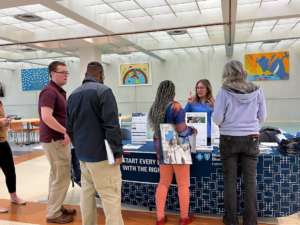
What do you wish people understood better about the impact of federal employees’ work in your area?
With so much political angst in the country, I feel that federal employees often get caught in the middle. A lot of people who bemoan large government fail to realize that federal employees keep their food safe, their flights safe, their workplaces safe, our National Parks clean and safe to visit, the funds in their bank accounts safe from losses, the air we breathe safe from toxins and so much more.
What’s a must-try food or activity for anyone visiting the area, and why?
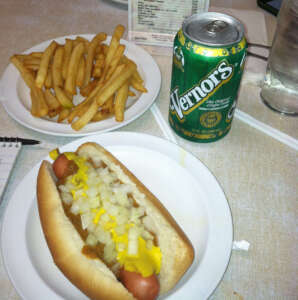
Detroit is the home of the Coney dog, the must-try food here in the Motor City. It consists of a snappy casing hot dog, chili sauce, mustard and onions. Of course, you must wash it down with a Vernors ginger ale! As for an activity, head over to the Motown Museum and enjoy the Motown experience. The museum attracts visitors from all over the world but is a hidden gem here in the United States.
What are the benefits and challenges of your distance from D.C.?
The main benefit of being away from D.C. is that we are not enmeshed in all the political drama that goes on there. In D.C., the federal government is king; here it is part of a more diverse workforce, and we are able to operate with a certain degree of autonomy as a result. The challenge of being away from D.C. is the resources. In D.C., resources are more readily available, be it monetary, proximity to one another or the sheer volume of brainpower possessed by all of the federal employees located there.
The Gateway to the West: St. Louis’ FEB
By: Anita Leach, St. Louis FEB executive director | Return to the top

Why is your local FEB important to federal employees working in your region?
It provides a forum for networking among agencies to share best practices and streamline support for activities such as training, recognition, emergency management, and other programs which some agencies offer but other agencies may not be able to.
What does your local FEB hope to accomplish over the next year?
We hope to provide in-person retirement training, alternative dispute resolution training, and other training as desired by local federal agencies. We hope to have an in-person awards recognition ceremony, the first in-person ceremony since 2019. We also hope to have an in-person continuity of operations exercise, the first in-person exercise since 2019, prior to the pandemic.
What makes your geographical region a unique place for federal employees to work?
The Midwest provides a lower cost of living than many other parts of the country.
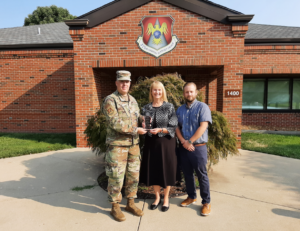
What do you wish people understood better about the impact of federal employees’ work in your area?
There are so many agencies who serve the public and provide behind-the-scenes support that makes a difference for the country and in the lives of so many people, but so many are not aware of this. The FEB also helps to educate agency managers on the missions of other federal agencies.
What’s a must-try food or activity for anyone visiting the area, and why?
Food: toasted ravioli, gooey butter cake and thin crust pizza. Visiting the area: the Arch because it’s unique and was built years ago but appears to be modern, and attending a St. Louis Cardinals or St. Louis Blues game. St. Louis fans love sports.
What are the benefits and challenges of your distance from D.C.?
The benefits are flexibility, distance from some of the politics, and more focus on the ground level of carrying out agency missions. The challenge is not getting as much support or focus with the distance.
City of Light: Cleveland’s FEB
By: Jill Dietrich Mellon, Cleveland FEB chairwoman | Return to the top
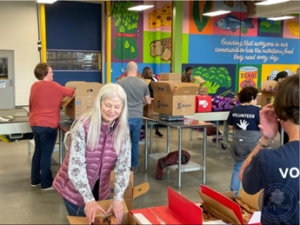
Why is your local FEB important to federal employees working in your region?
For federal employees working in Cleveland, the Federal Executive Board creates a needed infrastructure, as well as a connected community. FEB in Cleveland addresses the needs of both large federal employers and the agencies with fewer staff in the region. The FEB is an organization that creates a platform for collaboration in areas of common interest like professional development, workforce building and emergency management enhanced by a pipeline for collaboration with the community.
What does your local FEB hope to accomplish over the next year?
We are in a year of transition, with the new FEB Forward program providing enhanced structure and support from OPM. This year we are working with agencies in northeast Ohio to build a vision for the future of Cleveland FEB. Part of that process is looking at high-value programs for sustainment, like the Cleveland Federal Community Leadership Institute (CFCLI). CFCLI has been running for over 20 years and has received rave reviews from participants for both leadership development curriculum and connection with the community. The new FEB structure provides an opportunity to take flagship programs like CFCLI and expand them to the rest of Ohio and beyond. Beyond that, we heard from area federal agencies that they would like to restart a past program: a federal employment career fair. We are working with local non-profits, educational institutions and city government to make that happen this spring to build awareness of opportunities and processes to start a career in public service.
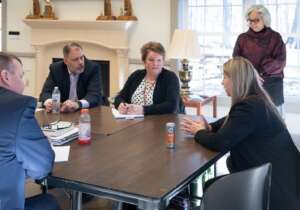
What makes your geographical region a unique place for federal employees to work?
Cleveland FEB covers almost 20,000 federal employees in northeast Ohio across 28 counties and 85 organizations. This represents a significant concentration of federal employees with large employers like Defense Finance Accounting Service (DFAS), the Coast Guard, NASA and Veterans Affairs, along with a broad range of federal operations with smaller regional footprints. This nexus of federal activity has been an underlying reason for the strength of Cleveland FEB since its inception in 1961, and for the consistently strong engagement from its member agencies.
What do you wish people understood better about the impact of federal employees’ work in your area?
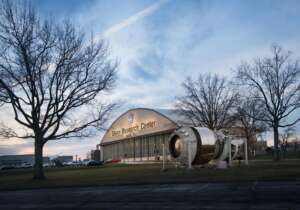
Federal employees choose this unique career path because they are mission-driven. They have an orientation toward public service, and those traits lead them to service in the local community as well. Our Cleveland Federal Community Leadership Institute has a significant focus on community service, with each participant engaged as part of a team to complete a hands-on project in the community. Last year’s class worked to support the community through a variety of impactful projects in the community including financial training for veterans returning to civilian life, connecting local high school students with STEAM internship opportunities, creating a check-in system to support seniors living alone in the community, and working with a local non-profit to provide move-in supplies to newly housed people who were facing challenges with housing insecurity and homelessness.
What’s a must-try food or activity for anyone visiting the area, and why?
Cleveland has an amazing food scene for a city its size. In 2023, there were three James Beard Award semi-finalists from Cleveland restaurants. But one of the most iconic foods from Cleveland is the Pierogi, a filled dumpling that has its origins in the Slavic culture, and was a staple for immigrants who came to work in the steel mills in Cleveland. You can find a lot of great food in Cleveland from diverse cultures that make the city an exciting and rich place to live.
What are the benefits and challenges of your distance from D.C.?
The answer to this question relates to the mission focus of federal employees. Whether in D.C. or in Northeast Ohio, it is the focus on mission that drives us all. The commonality of our mission is more powerful than our geographic location.
The Windy City: Chicago’s FEB
By: Jonlee Anderle, Chicago FEB Executive Committee member and past chairman | Return to the top
Why is your local FEB important to federal employees working in your region?
The Chicago Federal Executive Board develops and improves relationships with all levels of government in the region. Focusing on partnerships and outreach opportunities helps local agency directors implement national programs and White House initiatives by coordinating local resources through development of relationships with the city, state and county governments, and through public and non-profit sector partnerships.
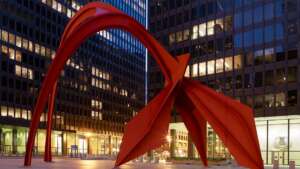
What does your local FEB hope to accomplish over the next year?
Our new chairwoman, Adele Rapport, is laser-focused on making sure that the Chicago FEB provides outreach to historically underserved communities, to include the tribal communities in the region. She has embraced a whole-of-government approach in working with underserved communities. Our executive committee will be meeting in mid-November for a full-day strategic planning session to map out the activities and initiatives for the upcoming year.
What makes your geographical region a unique place for federal employees to work?
Although the 43 agencies and 178 individual federal offices located within the Chicago FEB are located within the greater Chicagoland area, most of the agencies cover an entire region. Although the states within the regions that we cover differ from agency to agency, most include the States of Illinois, Indiana, Michigan, Minnesota, Ohio and Wisconsin. This group of six states has a total population of almost 60 million people, highlighting the work we do to bring the services of the federal government to those people who need it the most.
What do you wish people understood better about the impact of federal employees’ work in your area?
I wish people understood the passion and commitment to service that the majority of federal employees bring to their work each and every day. Each agency has a specific mission and the vast majority of the federal workforce is committed to that mission.

What’s a must-try food or activity for anyone visiting the area, and why?
Personal preferences include Chicago deep-dish pizza and Chicago dogs. A visit to Chicago should always include a walk along the Chicago Riverwalk, an architectural sightseeing boat tour along the Chicago River and Lake Michigan shoreline, and a visit to Navy Pier and Millennium Park.
What are the benefits and challenges of your distance from D.C.?
The evolution of the federal workforce that was forced by the pandemic has shown us that time zones and geographical differences were an easy obstacle to overcome. Our ways of collaborating and communicating have evolved to the point where we are all acting as one team rather than a headquarters vs. field mentality. Both are critical to the success of the mission and collaboration between D.C. and the field has gone through a tremendous transformation — for the betterment of the public we all serve.
The Queen City: Cincinnati’s FEB
By: Tina Toca, Cincinnati FEB official since 1999 | Return to the top

Why is your local FEB important to federal employees working in your region?
The Cincinnati FEB plays a crucial role in creating a collaborative and supportive environment for federal employees in the greater Cincinnati area. By promoting coordination, communication, professional development and community engagement, the FEB contributes to the overall success and well-being of federal workers in the region.
What does your local FEB hope to accomplish over the next year?
To expand FEB services beyond the greater Cincinnati area.
What makes your geographical region a unique place for federal employees to work?
Cincinnati is home to a variety of federal agencies and offices, providing federal employees with diverse job opportunities across different sectors. Compared to other major cities, Cincinnati has a relatively affordable cost of living, and is rich in cultural and recreational amenities. While individual preferences and career goals vary, the combination of job opportunities, a diverse economy, cultural amenities and a supportive community makes Cincinnati an attractive, unique place for federal employees to work and live.
What do you wish people understood better about the impact of federal employees’ work in your area?
Federal agencies in the area create job opportunities, not only within the government, but also indirectly in the private sector. Contractors, service providers and businesses that support federal initiatives can experience job growth due to federal activities. The impact of federal employees’ work in the area is significant and far-reaching. Beyond employees’ duties within their agencies, their contributions extend to economic growth, community development and the overall well-being of the local population.

What’s a must-try food or activity for anyone visiting the area, and why?
One must-try food in Cincinnati is the Cincinnati-style chili, a distinct style of chili that differs from the more traditional Texan varieties. It’s commonly served over spaghetti or hot dogs and can be topped with shredded cheese, onions and beans, creating a dish known as a “three-way,” “four-way” or “five-way,” depending on the additional toppings.
What are the benefits and challenges of your distance from D.C.?
The benefits are a local focus, which allows the FEB to address specific needs and challenges relevant to the agencies and federal workforce in the area. The challenges are the limited in-person interactions. While virtual tools are wonderful, they don’t replicate the benefits of in-person interactions with our leadership team.
Paris of the Plains: Kansas City, Missouri’s FEB
By: Larry Hisle, Kansas City FEB executive director | Return to the top
Why is your local FEB important to federal employees working in your region?
Kansas City, as a regional hub for the federal government, supports over 160 federal agencies and 38,000 federal employees. The FEB works to bring them together to share their individual missions, thus making a greater impact towards our community.
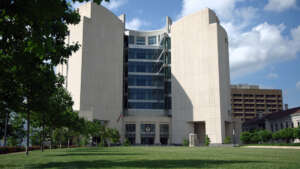
What does your local FEB hope to accomplish over the next year?
We are really excited about our Regional Inter-Agency Executive Coordination Group. Federal leaders have been working on a regional coordination initiative whose mission is to coordinate inter-agency resources (e.g., people, programs, funding) to provide information and technical assistance directly to communities to facilitate increased access to all available resources that address community priorities and needs.
What makes your geographical region a unique place for federal employees to work?
Being in the center of the country helps us draw talent from every corner of the country. Employees are able to enjoy a low cost of living, easy travel to any part of the county, and all four seasons in a little big-town.
What do you wish people understood better about the impact of federal employees’ work in your area?
Federal employees take great pride in what they do. To be of service to others is the best service there is.
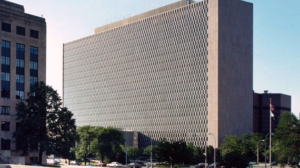
What’s a must-try food or activity for anyone visiting the area, and why?
Of course barbecue. Your big questions are which ones and how many. However, as a former cowtown, the steak is fabulous. We also have a strong Italian community, so there are some wonderful options there. What to see? The National World War I Museum is fantastic. Since you are in the area, visit Union Station and Crown Center, the home of Hallmark cards and movies. Do some shopping and dine at the Country Club Plaza, the first planned suburban shopping center and the first regional shopping center to accommodate shoppers arriving by car. Next, stop at the Nelson-Atkins Museum, one of the finest general art museums in the United States, which holds over 40,000 works of art. Want to take in some sports? We’ve got you covered.
What are the benefits and challenges of your distance from D.C.?
There are certain comforts of being a bit removed from the beltway. We are known for being a highly productive region; however, there is a different work tone — more relaxed and relatable. The pandemic has helped to limit challenges of being in the field as we can be “virtually” anywhere.
Copyright © 2024 Federal News Network. All rights reserved. This website is not intended for users located within the European Economic Area.
Drew Friedman is a workforce, pay and benefits reporter for Federal News Network.
Follow @dfriedmanWFED
Daisy Thornton is Federal News Network’s digital managing editor. In addition to her editing responsibilities, she covers federal management, workforce and technology issues. She is also the commentary editor; email her your letters to the editor and pitches for contributed bylines.
Follow @dthorntonWFED






